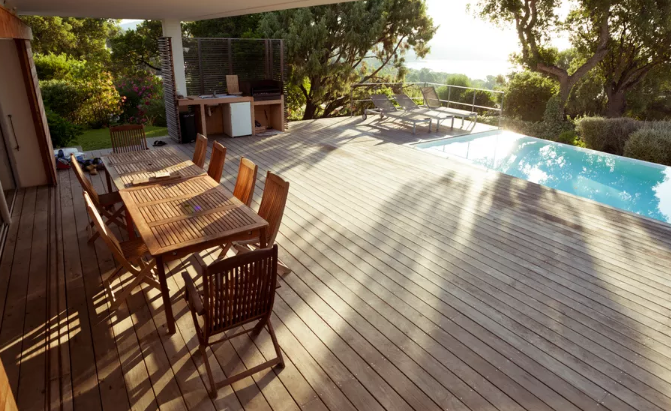Regular inspection, maintenance, and repair of a wood deck are necessary to keep it safe, functional, and looking good. If you’re lucky enough to have one, a deck should be a source of pride and pleasure. Make it an annual event—either spring or fall—to check the deck for things like wood damage, rot, loose nails, and other types of wear and tear. Address issues before they become bigger problems. Small repairs can save you money and time—before they become major reconstruction projects.
Follow this handy checklist to inspect your deck annually
- Inspect Wood Jessica -Wood needs to be maintained often, which includes cleaning, sanding, polishing, or painting. Here’s how to inspect:
- Look for evidence of rot. Using a knife or other sharp object, lightly poke or dig into areas that look soft and spongy; repair or replace the wood asap.
- Check the wood for splinters or cupping (sinking).
- Look at the ends of the wood boards. Have they started to warp?
- Check several different sections of the deck to make sure wood is still sturdy and solid. These include ledger boards, support posts, joists under the deck, deck boards, railings, and stairs. These areas will be addressed in more detail later.
- Inspect for small holes in the wood, which may indicate insect damage, particularly termites.
- Look for Nail Pop -One of the most common problems with aging decks is something called nail “pop.” Wood boards or planks on older decks are often secured with nails, which are prone to popping up throughout the year. This is caused by wood expanding and contracting during temperature changes. The contraction and expansion force the nail to squeeze or push up and out of the wood. Of course, these should be nailed down or, better yet, replaced with screws, which will make things tighter.
- Check Stairs and Steps -Before inspecting stairs or steps, contact your city or county website for information on current residential building codes. The big question: Do your stairs or steps comply? If not, what are you going to do it about it?Mold and mildew are more likely to form during colder months. Are the stair treads slippery and potentially dangerous?Does the wood on the steps have rot or splitting? Look closely at the stringers, risers, and treads of the stairs.
- Inspect Posts -Decking posts are the vertical framing “members” that support the beams. Like other parts of the deck, the posts need to be checked out for rot and splitting. Pay special attention to the ends of the posts, where rotting and splits are more likely to develop.Is it time to tighten fasteners like nuts, bolts, screws, and nails? If the fastener seems loose after attempted tightening, look for rot in the wood. Sitting moisture is the main cause of wet or dry rot. If it is black and spongy or has dark brown strands, it is likely to be wet rot. Dry rot is lighter in color, but also soft (like wet rot). Don’t let its name deceive you—dry rot thrives in moist conditions.After rot issues are addressed, step back and survey the posts. Are they level or perfectly vertical (plumb)?
- Inspect the Railings -Like the stairs, you might want to check your city or community website for information on current residential building codes to see if your railings are compliant. Unlike horizontal deck boards—the surface you walk on and upon which furniture sits—vertical railings don’t get “roughed up” nearly as much. However, they can warp, twist or break.Here’s how to check the railings:
- If made of wood, inspect for signs of rot or splitting.
- Are railing posts fastened tightly to the deck?
- Lean against the railing or grab it and try to shake it. Does it shake easily or seem wobbly or unsteady?
- Inspect other railing connections and fasteners, like the balusters or balustrade. Secure and tighten or loosen wobbly rails.
- Look for Weathered or Discolored Boards -If the boards of your wood deck are discolored—usually gray—it is probably time for a good cleaning. Experts recommend washing a wood deck at least twice a year, preferably in the spring and fall. If it is more weathered, then boards may need to be replaced.
- Reseal or Paint-In addition to giving the deck a thorough cleaning, it may be time to paint or reseal it. This will keep it looking good for the foreseeable future!
Source: The Spruce
Collected and published by Arms &McGregor International Realty® editorial team. Get in touch with us at [email protected]

